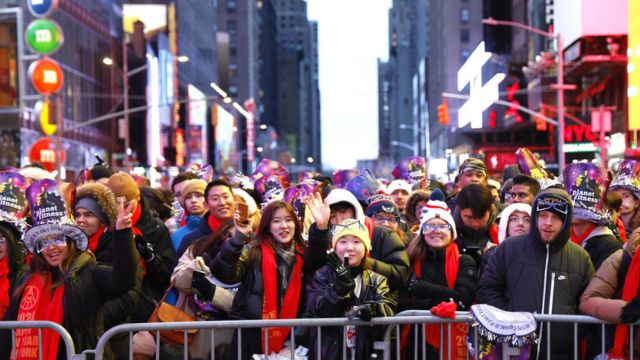The numerous luxuries that the state and city of New York are renowned for may be the reason you’re in the mood for New York. With a culture as broad and varied as the more than 8 million people who live there, the city is unlike any other on the earth.
New Yorkers don’t only live in the Big Apple; there are plenty other benefits throughout the state, such as some of the most breathtaking waterfalls on Earth, unusual rock formations, and opportunities for anything from strenuous outdoor activities to more refined wining and dining along the Hudson River.
New York is known for having a high cost of living, though. Many individuals ponder if it’s really feasible to make ends meet with an entry-level employment in a state and a city with such exorbitant costs, given that the minimum wage in New York State is $15 per hour and slightly more in New York City at $16.
The financial realities of living on the minimum wage in New York in 2024 are examined in more detail below, along with the variations in expenses within and outside the city.
The Exorbitant Price of Real Estate
Most New York households consider housing to be their biggest expense, and there are notable differences in housing costs in New York State and New York City.
Recent data shows that the average monthly rent in New York state is little over $1,300 for a one-bedroom apartment. The similar apartment can set you back more than $3,700 in New York City.

That makes a big difference that affects the viability of living on minimum pay. While rent in less expensive areas of New York state may take up a significant portion of a minimum-wage worker’s pay, it would be difficult for one to find any kind of reasonable home in New York City without having many roommates to share the expense.
The Price of Utilities to Keep the Lights On
Without basic amenities like power, heat, air conditioning, water, and trash collection, a one-bedroom flat cannot be habitable. These should, in theory, differ significantly between cities and states, yet strangely, they’re almost equal.
SEE MORE –
Minimum Wage Hikes Announced in Nebraska and Across the Nation, What Workers Need to Know!
While utilities in New York City are slightly less expensive, at about $475 per month, they are still roughly $477 per month throughout the state as a whole.
Cuisine and Eating
Between New York State and New York City, there are substantial differences in food expenses. Although prices differ around the state, they generally follow the $3,00 per person, per year national average. In comparison to most of the state, prices in N.Y.C. are almost 40% more.
Accordingly, each person’s monthly grocery expenses come to about $470, or around $5,700 annually.
New York City has even more pricey dining options. New Yorkers have one of the highest annual averages in the nation when it comes to dining out—nearly $3,500.
Traveling: The Price of Transportation
The expense of transportation can add up to a significant amount of money every month, depending on where you reside and the distance you travel. Unexpectedly, for those who are not aware with New York City’s extensive public transit network, city dwellers enjoy a significant benefit.
In New York state (outside the city), most people rely on their own cars for transportation, which means that in addition to gasoline, there are expenses for insurance and maintenance.
These have a monthly average of around $400, which is almost 40% more than the national average. In addition, if your automobile is not paid for, you need budget an extra $540 each month for your typical car payment, for a total of $940 in out-of-pocket expenses.
SEE MORE –
New Rules! Newsom Pushes Back CA Health Care Minimum Wage Increase to July 1 or Beyond
When it comes to getting about, city people primarily use public transit. There are 424 stops on the New York City subway, the most in the world, or buses. An yearly unlimited transport card costs a far more reasonable $132 per month and is valid for both the bus and subway systems.
Remaining Healthy: New York’s Medical Costs
Health care costs are high wherever you live, but there is no difference between the state and city because most health plans are offered statewide, therefore there is no benefit or drawback to residing in a city. In the state of New York, the average monthly cost of a “bronze-level,” or most basic, healthcare plan is around $800.
However, this cost includes a $4,600 out-of-pocket deductible that must be paid before your insurance kicks in to pay the remaining expenses.
Comparing the Minimum-Wage Budgets in New York State and New York City: An Analysis
To determine if the minimum wage is sufficient to pay all of those expenditures, let’s compare them for the state and city of New York.
– The Minimum Wage Earner in New York State
$15 per hourly wage
Pre-tax, full-time monthly income of $2,600 Monthly expenses
One thousand three hundred dollars rent
– $477 in utilities
groceries: $250
Transportation costs: $940
Medical: $800 Total Monthly Cost: $3,767
Even before taxes are deducted, monthly costs exceed the typical salary of a minimum-wage worker by more than $1,000. It would be an understatement to describe this as a perilous living condition.
Earners of minimum wage typically have to live in shared accommodation, make every effort to save money, and sometimes forgo basic requirements like access to healthcare. Of course, government help can ease some of the pain, but it’s not sustainable when weighing wages against costs alone.
Minimum Wage Earner in New York City
– Pay Per Hour: $16
Pre-tax, full-time monthly income of $2,773 Monthly expenses
Lease: $3,700
$475 in utilities
$350 for groceries
Transportation costs: $132
Medical: $800 Total Monthly Cost: $5,457
In New York City, the monthly rent for an individual is about $1,000 higher than their minimum salary. This somber image highlights the substantial financial, as well as psychological and emotional, burden minimum-wage workers in the city bear.
It is practically hard to maintain a minimal lifestyle on minimum wage without additional income or support due to the high cost of living, especially housing.
Does New York’s Minimum Wage Allow You to Subsist?
In one phrase – Nope. There are nearly insurmountable obstacles to living on minimum wage in both New York State and New York City, with several notable differences making things worse for city dwellers.
The minimum wage in New York state does not provide enough money to pay one’s basic living expenditures, much alone savings or unforeseen bills. Even with government support, the minimum-wage worker may still anticipate a subpar standard of living since the margin is so narrow.
The rent on a one-bedroom apartment in New York City is beyond the reach of minimum-wage workers, who also struggle to pay for utilities, food, transportation, and healthcare.
Even though it’s expected to increase yearly by 2026 to $17 in New York City and its environs and $16 in the remaining portions of the state, the minimum wage in the state is still much too low. Again, it is likely to be too little, too late. Any additional raises are supposed to be connected to the Consumer Price Index for Urban Wage Earners and Clerical Workers, which is correlated with inflation.
